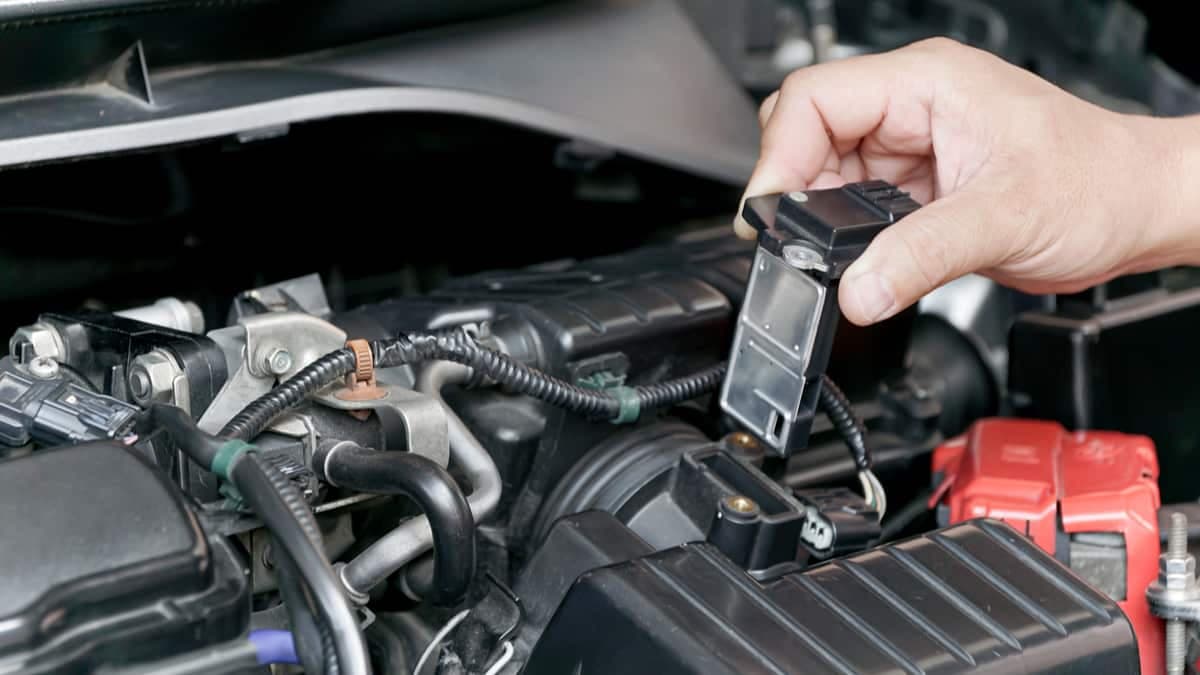In vehicles with ITB setups, without a cold air intake plenum, obtaining highly accurate IAT readings becomes complex. The use of an open element air filter introduces inevitable IAT measurement errors, underscoring the necessity of selecting an optimal sensor location.
Initial Placement and Considerations
Originally, the IAT sensor was positioned on the shock tower near the exhaust side, a location that raised concerns due to potential heat soak despite the application of a thermal insulating blanket on the exhaust manifold. The dynamic air movement within the engine bay, while beneficial for cooling, introduces variability in IAT readings, demanding a more stable sensor location to avoid significant temperature fluctuations.
Exploring Alternative IAT Sensor Locations
The quest for an ideal IAT sensor location involves balancing between heat soak susceptibility and airflow disruption. Mounting the sensor directly on the air filter backing plate, though aesthetically pleasing, compromises its accuracy due to heat soak. An innovative approach involves positioning the sensor to dangle off the brake booster’s hard line, a concept inspired by successful implementations in similar builds, ensuring it captures the hottest air yet avoiding direct impact on airflow within the ITB manifolds.
Symptoms of a Faulty IAT Sensor
Malfunctioning IAT sensors manifest through several indicators: activation of the check engine light, poor engine performance, including rough idle and sluggish acceleration, and difficulties in starting or stalling, particularly under cold conditions. These symptoms signal the need for sensor inspection or replacement to maintain engine efficiency.
Maintenance Tips for the IAT Sensor
Regular servicing of the IAT sensor involves careful removal, inspection for damage or dirt accumulation, and thorough cleaning with appropriate tools and solutions. Proper maintenance enhances sensor longevity and ensures consistent engine performance.
Related Products for IAT Sensor Replacement
For those seeking replacements, products such as the intake air temperature sensor for BMW e46, Nissan Qashqai air intake pipe, and Ford Ranger intake air temperature sensor are among the top considerations, each designed to restore optimal air temperature measurement and engine control.
Comparative Table: IAT Sensor Placement Strategies
| Strategy | Pros | Cons | Best Use Case |
|---|---|---|---|
| Shock Tower Mounting (Exhaust Side) | Easy access; minimal installation effort | Potential heat soak from exhaust manifold | Short drives; mild climates |
| Air Filter Backing Plate Mounting | Aesthetic appeal; direct air intake reading | High susceptibility to heat soak | Show cars; limited performance usage |
| Brake Booster Hard Line Mounting | Avoids direct airflow disruption; captures hot air accurately | Less intuitive placement; requires secure mounting | Performance-focused builds; racing applications |
| Near Air Horns/Intake Runners | Close to air intake source; less prone to heat soak | Risk of airflow velocity disruption | Optimized setups; advanced tuning |
Key Considerations for IAT Sensor Placement
- Environmental Impact on Readings: Consider the ambient conditions in which the vehicle operates. Areas with high temperature fluctuations necessitate a more strategic placement to avoid frequent IAT errors;
- Engine Bay Airflow Dynamics: Understanding the airflow pattern within the engine bay can inform better placement decisions, ensuring the sensor is exposed to representative air temperatures;
- Thermal Insulation Techniques: Employing thermal barriers or insulating materials near the sensor can mitigate the effects of heat soak, providing more stable readings;
- Accessibility for Maintenance: Position the sensor in a location that allows easy access for regular maintenance, ensuring its longevity and reliability;
- Integration with Engine Tuning Goals: Align sensor placement with overall tuning objectives, whether for daily driving reliability or peak performance in racing applications.
Video Guide
To answer all your questions, we have prepared a video for you. Enjoy watching it!
Conclusion
Navigating the complexities of IAT sensor placement is paramount in tuning endeavors, particularly in vehicles outfitted with ITB setups. The delicate balance between mitigating heat soak and ensuring accurate air temperature measurements demands a strategic approach. As elucidated in the table, each placement strategy offers its unique advantages and limitations, underscoring the necessity for a tailored solution based on specific engine configurations and performance goals. Ultimately, the quest for the ideal IAT sensor location underscores the intricate interplay between engineering principles and practical tuning experiences, guiding enthusiasts and professionals alike towards achieving enhanced engine performance and efficiency.
